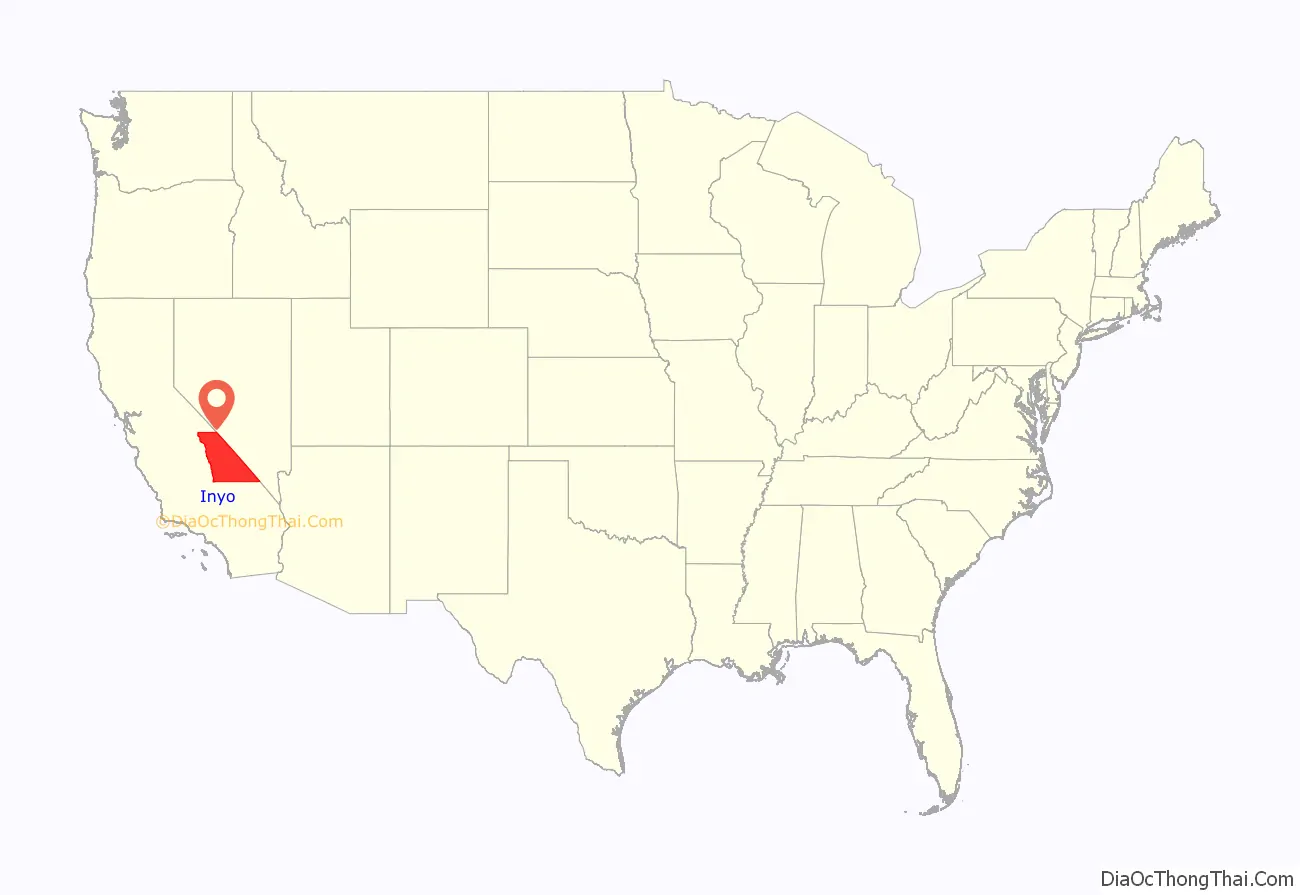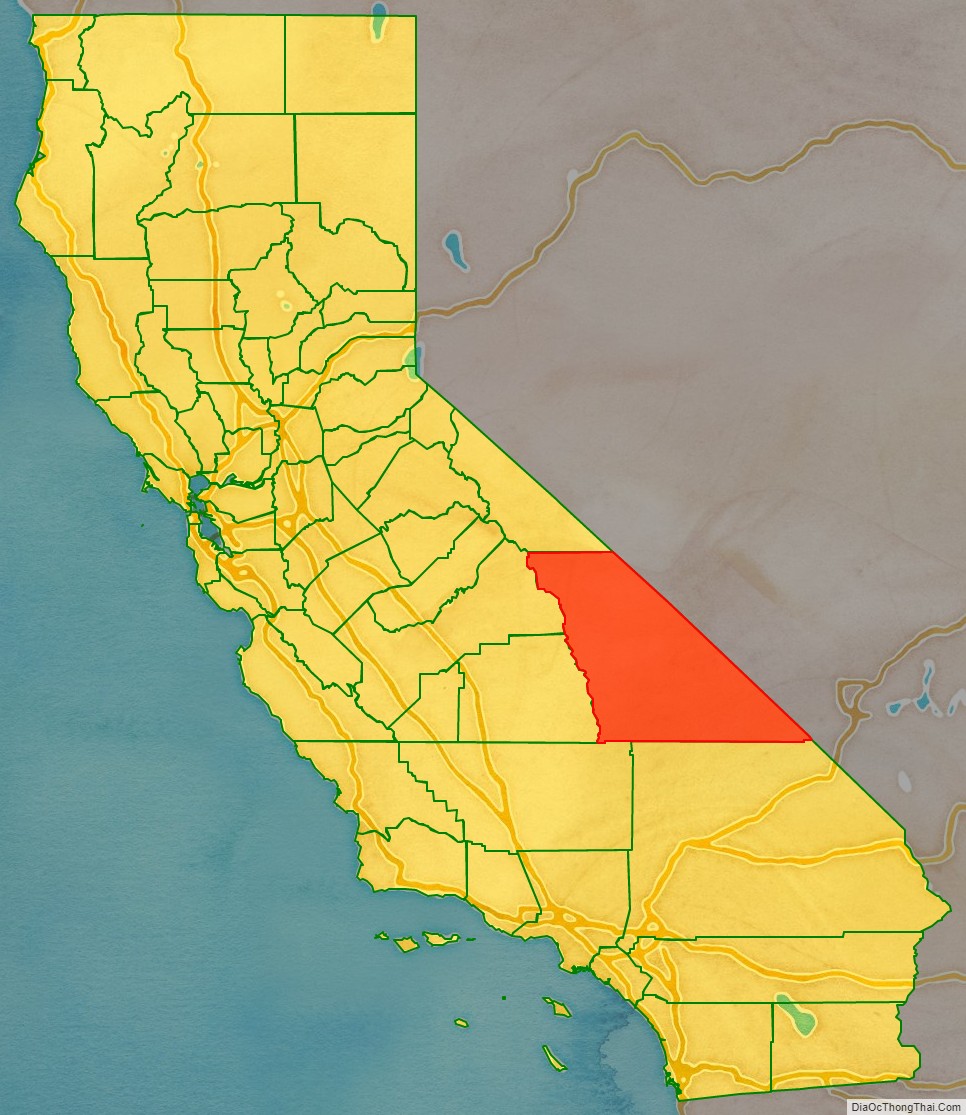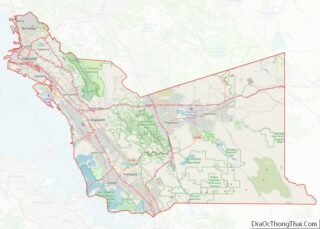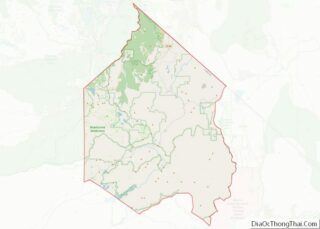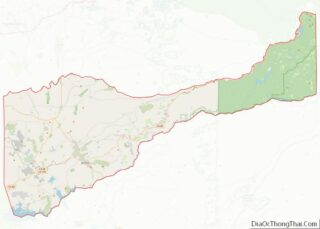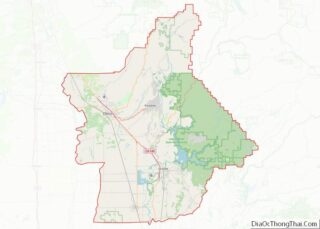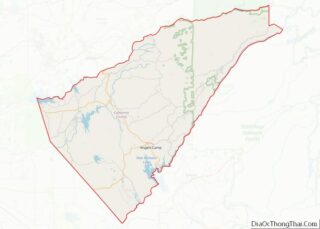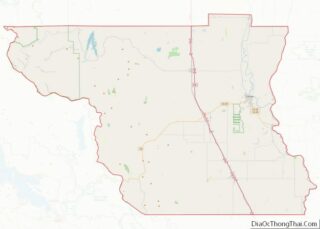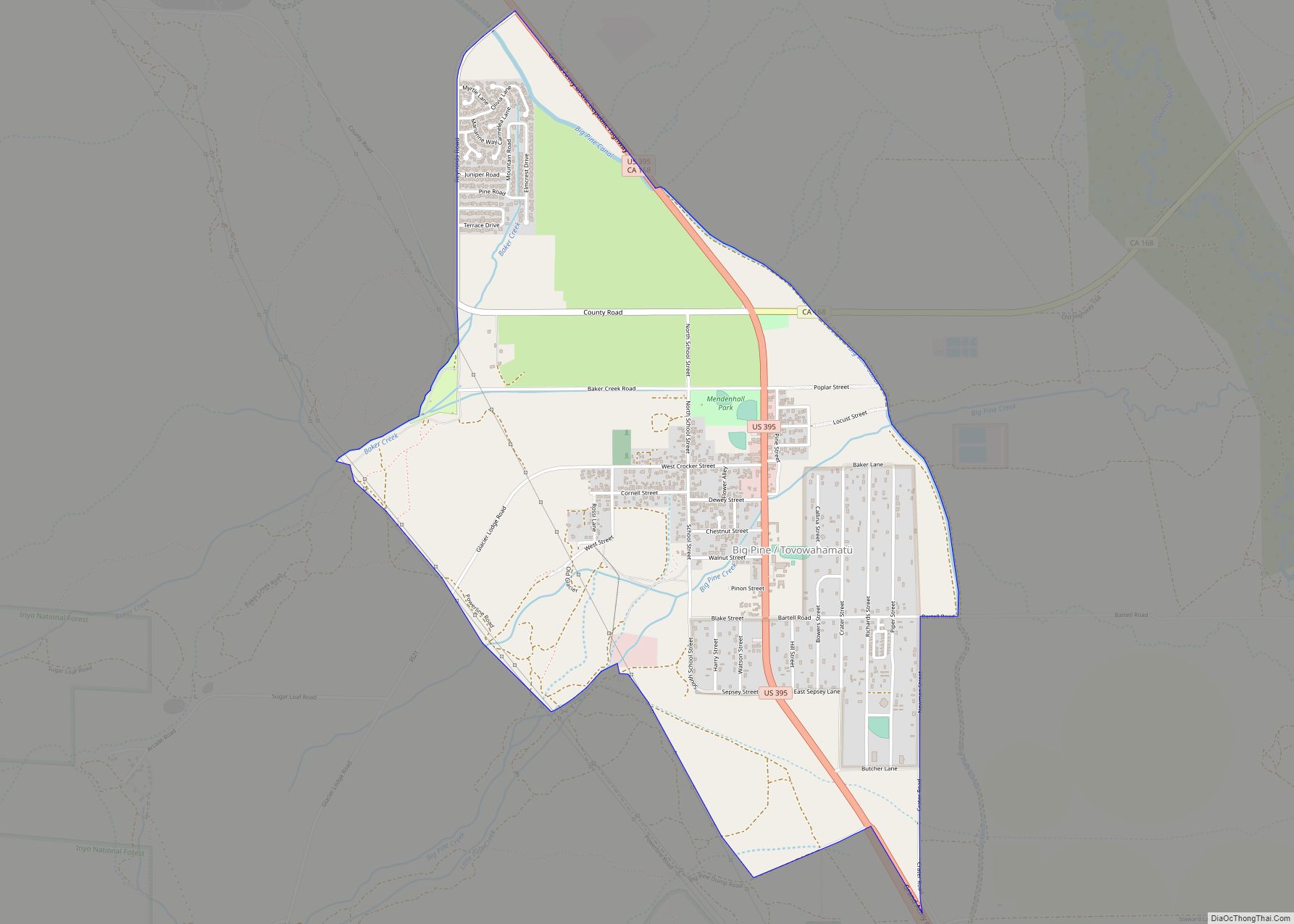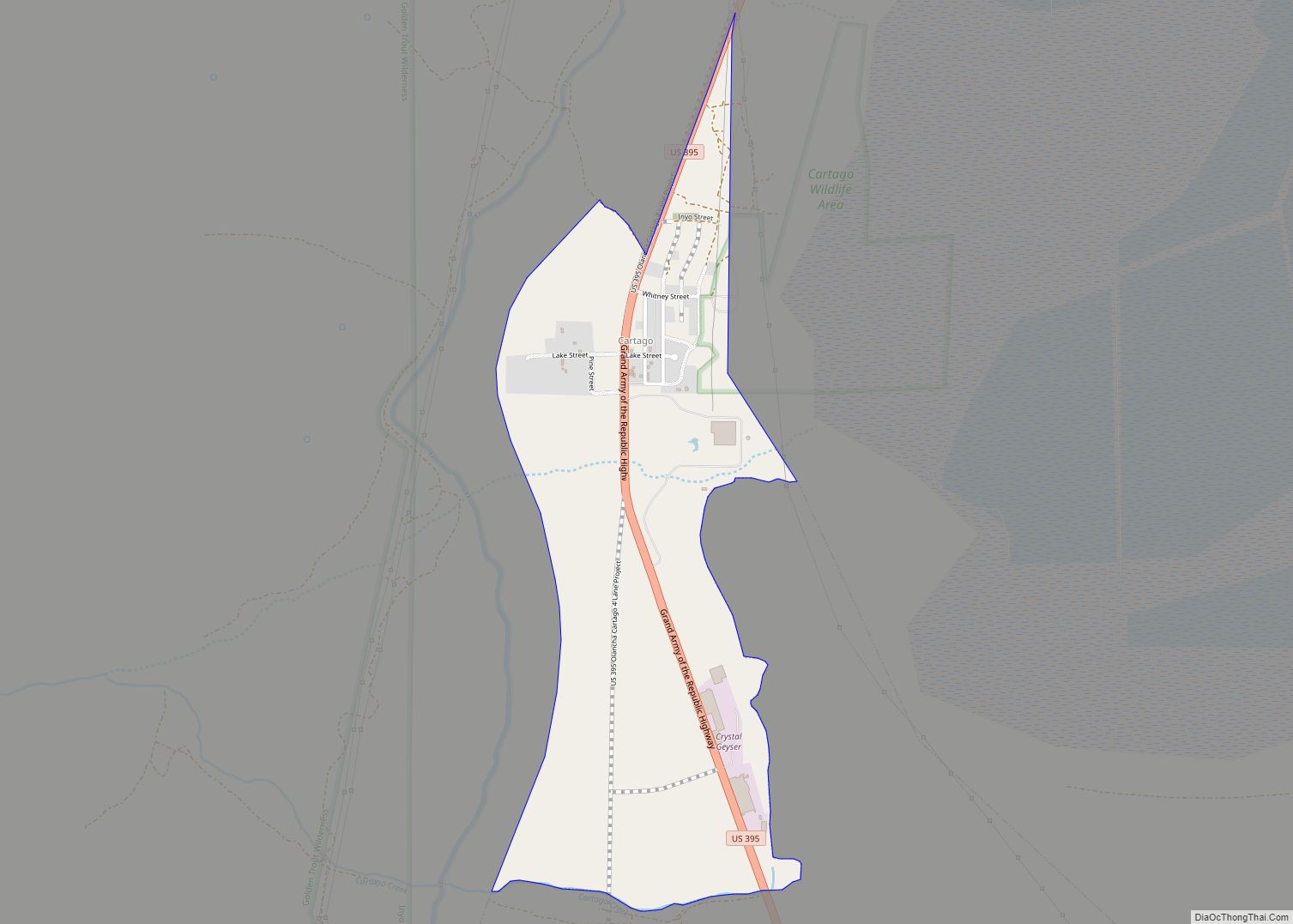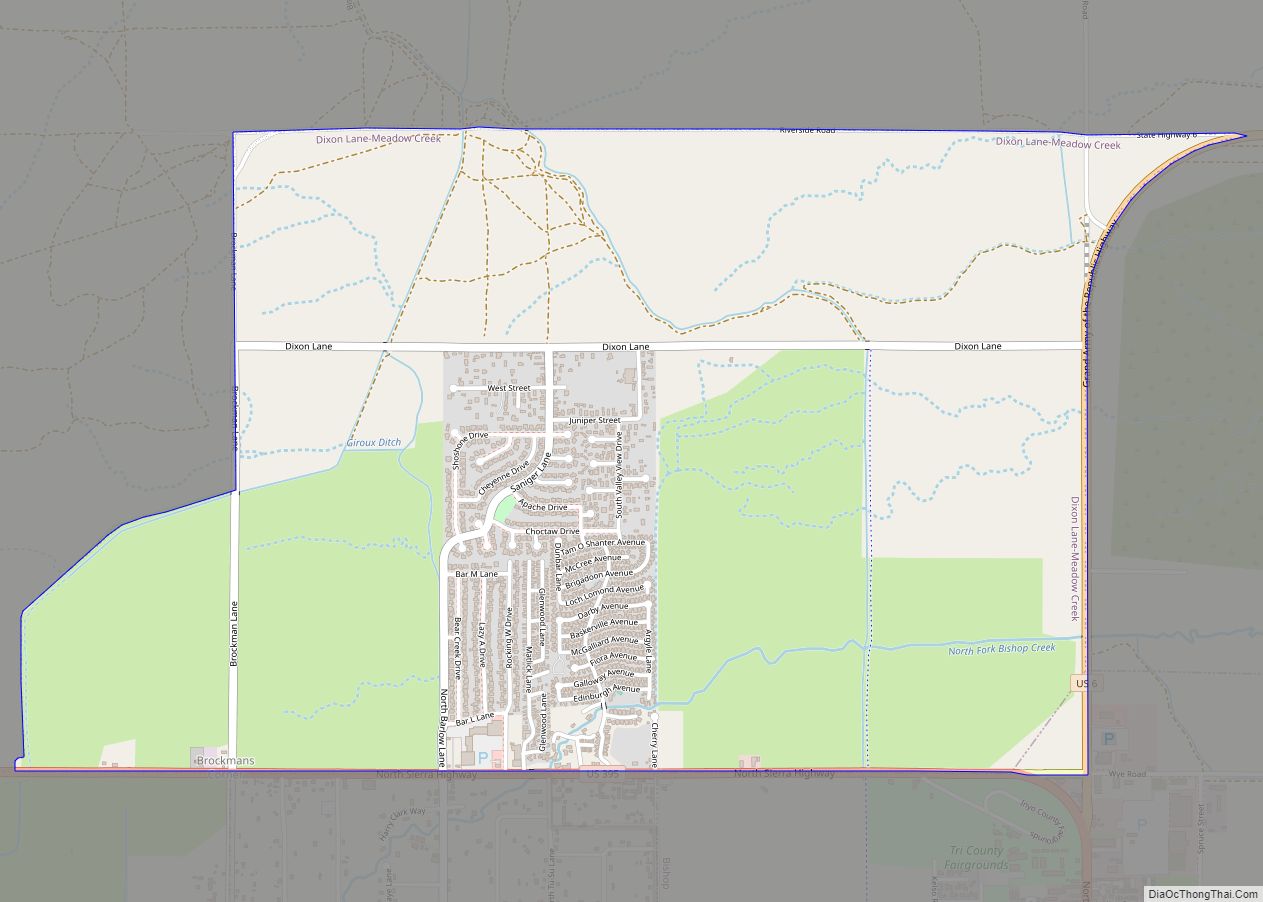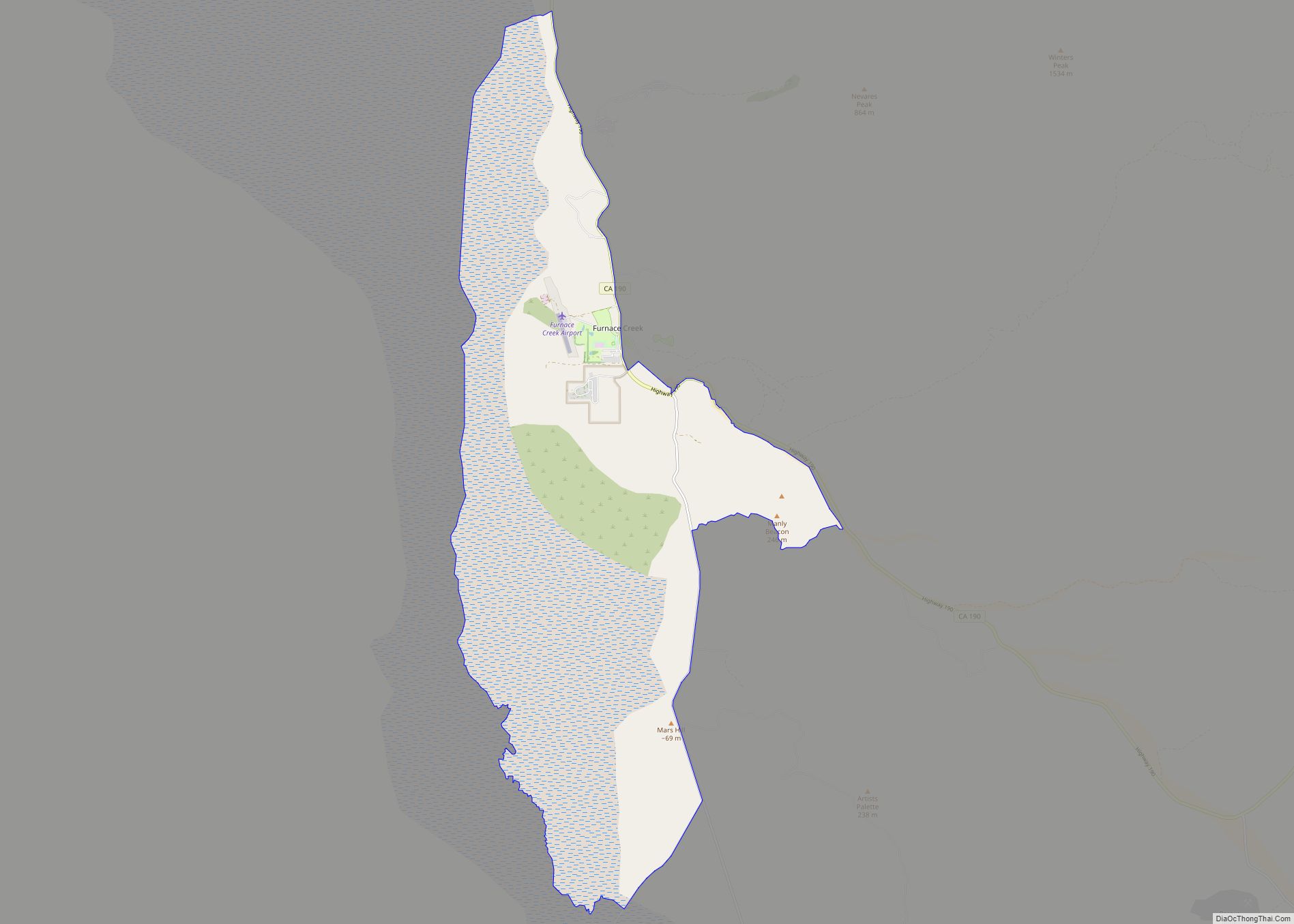Inyo County (/ˈɪnjoʊ/ (listen)) is a county in the eastern central part of the U.S. state of California, located between the Sierra Nevada and the state of Nevada. In the 2020 census, the population was 19,016. The county seat is Independence. Inyo County is on the east side of the Sierra Nevada and southeast of Yosemite National Park in Central California. It contains the Owens River Valley; it is flanked to the west by the Sierra Nevada and to the east by the White Mountains and the Inyo Mountains. With an area of 10,192 square miles (26,397 km), Inyo is the second-largest county by area in California, after San Bernardino County. Almost one-half of that area is within Death Valley National Park. However, with a population density of 1.8 people per square mile, it also has the second-lowest population density in California, after Alpine County.
| Name: | Inyo County |
|---|---|
| FIPS code: | 06-027 |
| State: | California |
| Founded: | 1866 |
| Named for: | ɨnnɨyun ‘it’s dangerous’ in Timbisha |
| Seat: | Independence |
| Largest city: | Bishop |
| Total Area: | 10,227 sq mi (26,490 km²) |
| Land Area: | 10,181 sq mi (26,370 km²) |
| Total Population: | 19,016 |
| Population Density: | 1.9/sq mi (0.7/km²) |
| Time zone: | UTC−8 (Pacific Time Zone) |
| Summer Time Zone (DST): | UTC−7 (Pacific Daylight Time) |
| Website: | www.inyocounty.us |
Inyo County location map. Where is Inyo County?
History
Present-day Inyo county has been the historic homeland for thousands of years of the Mono, Timbisha, Kawaiisu, and Northern Paiute Native Americans. The descendants of these ancestors continue to live in their traditional homelands in the Owens River Valley and in Death Valley National Park. Worse, the portion north of the 37th parallel had been claimed by Nevada Territory (later the state of Nevada) as part of its westernmost border from 1861 to 1866.
Inyo County was formed in 1866 out of the territory of the unorganized Coso County, which had been created on April 4, 1864, from parts of Mono County and Tulare County. It acquired more territory from Mono County in 1870 and Kern County and San Bernardino County in 1872.
For many years it has been commonly believed that the county derived its name from the Mono tribe’s name for the mountains in its former homeland. Actually the name came to be thought of, mistakenly, as the name of the mountains to the east of the Owens Valley when the first whites there asked the local Owens Valley Paiutes for the name of the mountains to the east. They responded that that was the land of Inyo. They meant by this that those lands belonged to the Timbisha tribe headed by a man whose name was Inyo. Inyo was the name of the headman of one of the Timbisha bands at the time of contact when the first whites, the Bennett-Arcane Party of 1849, wandered, lost, into Death Valley on their expedition to the gold fields of western California. The Owens Valley whites misunderstood the reference and thought that Inyo was the name of the mountains when actually it was the name of the chief, or headman, of the tribe that had those mountains as part of their homeland. In Timbisha, ɨnnɨyun means “it’s (or he’s) dangerous”.
To supply the growing City of Los Angeles, water was diverted from the Owens River into the Los Angeles Aqueduct in 1913. The Owens River Valley cultures and environments changed substantially. From the 1910s to 1930s the Los Angeles Department of Water and Power purchased much of the valley for water rights and control. In 1941 the Los Angeles Department of Water and Power extended the Los Angeles Aqueduct system farther upriver into the Mono Basin.
Inyo County Road Map
Geography
Mount Whitney, the highest peak in the contiguous United States, is on Inyo County’s western border (with Tulare County). The Badwater Basin in Death Valley National Park, the lowest place in North America, is in eastern Inyo County. The difference between the two points is about 14,700 feet (4,500 m). They are not visible from each other, but both can be observed from the Panamint Range on the west side of Death Valley, above the Panamint Valley. Thus, Inyo County has the greatest elevation difference among all of the counties and county-equivalents in the contiguous United States.
According to the U.S. Census Bureau, the county has a total area of 10,227 square miles (26,490 km), of which 10,181 square miles (26,370 km) is land and 46 square miles (120 km) (0.5%) is water. It is the second-largest county by area in California and the ninth-largest in the United States (excluding boroughs and census areas in Alaska).
Lakes
- Camp Lake
- Cottonwood Lakes
- Diaz Lake
- Dingleberry Lake
- Granite Lake
- Inconsolable Lake
- Loch Leven
- Mills Lake
- Pee Wee Lake
- Robinson Lake
- Rock Creek Lake
- Lake Sabrina
- Weir Lake
- Wishbone Lake
National protected areas
- Death Valley National Park (part)
- Inyo National Forest (part)
- Manzanar National Historic Site
There are 22 official wilderness areas in Inyo County that are part of the National Wilderness Preservation System. This is the second-largest number of any county, exceeded only by San Bernardino County‘s 35 wilderness areas. Most of these are managed solely by the Bureau of Land Management, but four are integral components of Death Valley National Park or Inyo National Forest and are thus managed by either the National Park Service or the Forest Service. Some of these wilderness areas also extend into neighboring counties.
Except as noted, the wilderness areas are managed solely by the Bureau of Land Management and lie entirely within Inyo County:
- Argus Range Wilderness
- Coso Range Wilderness
- Darwin Falls Wilderness
- Death Valley Wilderness (part)
- Funeral Mountains Wilderness
- Golden Trout Wilderness (part)
- Ibex Wilderness
- Inyo Mountains Wilderness (part)
- John Muir Wilderness (part)
- Malpais Mesa Wilderness
- Manly Peak Wilderness
- Nopah Range Wilderness
- Owens Peak Wilderness (part)
- Pahrump Valley Wilderness (part)
- Piper Mountain Wilderness
- Resting Spring Range Wilderness
- Sacatar Trail Wilderness (part)
- Saddle Peak Hills Wilderness (part)
- South Nopah Range Wilderness
- South Sierra Wilderness (part)
- Surprise Canyon Wilderness
- Sylvania Mountains Wilderness
Death Valley National Park
Death Valley National Park is a mostly arid United States National Park east of the Sierra Nevada mountain range in southern Inyo County and northern San Bernardino County in California, with a small extension into southwestern Nye County and extreme southern Esmeralda County in Nevada. In addition, there is an exclave (Devil’s Hole) in southern Nye County. The park covers 5,262 square miles (13,630 km), encompassing Saline Valley, a large part of Panamint Valley, almost all of Death Valley, and parts of several mountain ranges. Death Valley National Monument was proclaimed in 1933, placing the area under federal protection. In 1994, the monument was redesignated a national park, as well as being substantially expanded to include Saline and Eureka Valleys.
It is the hottest and driest of the national parks in the United States. It also features the second-lowest point in the Western Hemisphere and the lowest point in North America at the Badwater Basin, which is 282 feet (86 m) below sea level. It is home to many species of plants and animals that have adapted to this harsh desert environment. Some examples include Creosote Bush, Bighorn Sheep, Coyote, and the Death Valley Pupfish, a survivor of much wetter times. Approximately 95% of the park is designated as wilderness. Death Valley National Park is visited annually by more than 770,000 visitors who come to enjoy its diverse geologic features, desert wildlife, historic sites, scenery, clear night skies, and the solitude of the extreme desert environment.
Other parks
- Alabama Hills Recreation Area
- Last Chance Meadow Research Natural Area
- California Bighorn Sheep Zoological Area
